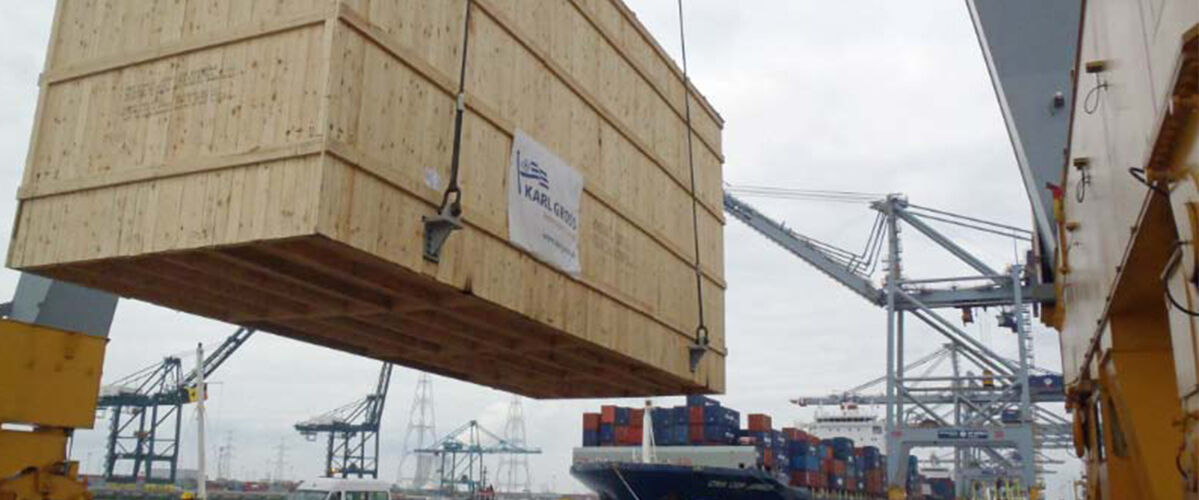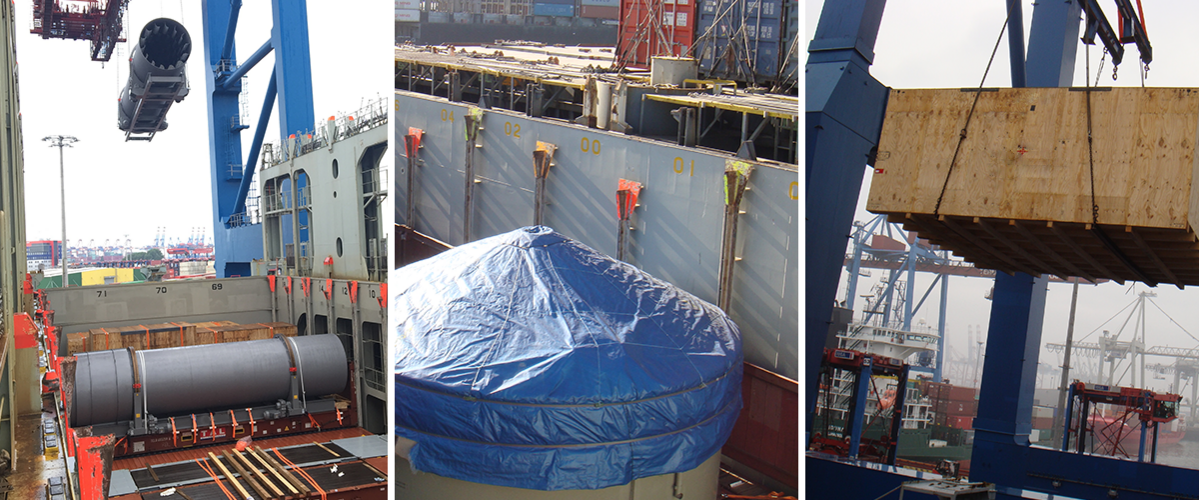Maaike van Boxel is one of our experts for shipments for containerized cargo. Organizing container shipments to or from the port of Rotterdam is her “daily bread”. In this article, Maaike answers questions relating to shipping containerized goods.
Which kinds of goods can be containerized?
Generally and theoretically, anything that fits in a container can be shipped via container. There is a wide range of options which allows shipping goods of very different nature – even liquids. For these, there are tank containers or a standard container can be equipped with something called a Flexitank. Bulk freight for example can be shipped either loose in a container or it can be stuffed in “big bags”. This simplifies the loading and unloading processes of the container. But these are special cases.
A common scenario is that goods, which are up to be shipped via container, are packed in boxes or crates and stowed onto pallets.
Are there different types of containers?
Yes, the most prominent types are probably the standard 20’, the standard 40’ and the 40’ high cube container.
Other than these three, there are several special container types and special equipment, respectively. For example: open top containers – containers with a detachable solid or tarpaulin roof – which can be used for goods with over height.
Shipments that do not fit in a standard container due to their width or height can be stowed on so-called flat racks. Flat racks are “containers” which consist of a flooring platform with two end walls, only.
The key with any type of container – regardless if they are standard or special equipment – is that they have standardized outside dimensions in regards to their footprint. This makes them compatible with the slots on a container vessel and allows for the efficient loading and unloading procedures container vessels are known for.
Does the kind of cargo loaded affect the rate? Or so to speak, does it make a difference if textiles or chemicals are loaded in a container?
There are FAK rates, which means “freight all kinds”. These cover may different types of cargo. Yet for some cargo types such as chemicals, waste products or steel products, for example, there are special rates. So, yes, the type of cargo to be shipped may make a difference in the ocean freight rate.
What about the weight? Is there a weight limit?
Container weight limits vary. The maximum load capacity of a container is posted on the door of each container. The maximum load capacity of a 40’ standard container, for example, may be between 26 and 28 tons, depending on its construction type. The load capacity of a 20’ standard container often is up to 29 tons.
Yet, the limitations in payload stipulated by the specific container series are just one aspect.The limitations set by the shipping lines are another. Ocean carriers define for themselves the weight limitations for containers they take onboard. These may well result in maximum payloads which are lower than the actual maximum payload of the series.
Background is that shipping lines calculate with an average weight of a 20’ container based on the total capacity of the ship. If one container is heavier than the average weight they calculated, another container needs to compensate that with less weight. So it is a mixed calculation. For a “heavy” 20’ standard container, for example, ocean carriers often charge a “heavy weight additional”, but it also may be that a carrier decides not to ship heavy load 20’ containers at all. The weight from which upward carriers start to consider a 20’ container as “heavy” varies from carrier to carrier.
And another point needs to be kept in mind. This is regarding the on-carriage: The maximum weight limitations for road transportation in the country of destination may be less than those in the country of origin. This needs to be considered when planning the loading process as well.
What needs to be paid attention to when actually loading a container?
Securing the cargo! This topic is often underestimated. When shipping goods via ocean freight, the movements of the ship are transmitted from the ship to its freight. To avoid damages of goods, the container or even the ship, the goods need to be secured to their place inside the container well enough to stay in place at any time – also in heavy seas.
A balanced weight inside a container is another important point. Significant imbalances such as overweight on one side may cause problems in the loading and unloading process. These are just two out of the many things which need to be kept in mind, when loading a container. Therefore, we often advise our customers to engage a professional packaging center for loading a container.
What does it cost to ship goods via ocean freight?
There is no concrete answer to this question. For calculating the costs of ocean freight shipments, there are several things to look at. To come to a total transport cost, the pre carriage, the ocean journey and the on-carriage need to be taken into account.
Ocean freight costs are made up of the actual freight rate and surcharges. The freight rates vary for example by season and they depend on the tradelane. The bottom line is that the fluctuations of the freight rates are really a question of supply and demand.
The surcharges vary from shipping company to shipping company and even within one company the costs may vary depending on the season and port of destination.
Some surcharges positions to the actual ocean freight rate and are always raised by the shipping lines. This is true for the BAF (Bunker Adjustment Factor). BAF refers to the ship’s fuel – called bunker. Carriers apply this surcharge to hedge the variability of the crude oil market price. Hence, the amount they charge for BAF varies.
To explain all of the different types of surcharges that are in the ocean freight market would go too far at this point. What is important to know is that the surcharges applicable to an ocean freight shipment are those which are valid at the time of shipment (VATOS).
When looking at the total cost of ocean freight shipping, the port charges also need to be considered. The THC, Terminal Handling Charge, is due at both the port of departure and the port of destination. It is a fee the respective terminal charges for handling the container at the terminal premises. Thus, when comparing quotations for ocean freight shipments, you should take a closer look as to which charges are included in the price and which may not be included.
Is it possible to ship your own containers?
Whether or not a shipping company accepts the shipper’s own containers needs to be checked case by case. Also, shipping rates will be negotiated individually for such cases. If a container line agrees to handle the shipper’s own containers, the containers in question need to fulfill a specific ISO Norm and be standardized in the way that they are compatible to the slots of the standard containers. A valid CSC badge is another must-have. This badge verifies the suitability of a container for the ocean shipping traffic.





